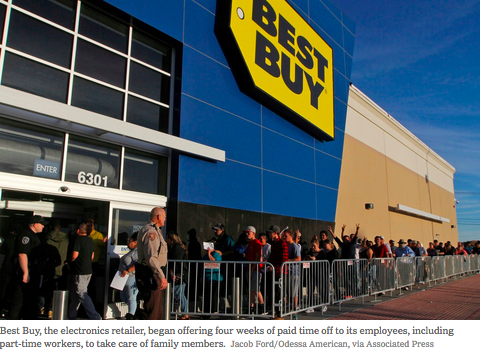WASHINGTON — One of the most perplexing questions about the nation’s economic recovery is why a tight labor market has not translated into faster wage growth. Part of the answer appears to be that American workers are receiving a growing share of compensation in the form of benefits rather than wages.
The average worker received 32 percent of total compensation in benefits including bonuses, paid leave and company contributions to insurance and retirement plans in the second quarter of 2018. That was up from 27 percent in 2000, federal data show. The rising cost of health insurance accounts for only about one-third of the trend. And the data do not include the increased prevalence of non-monetary benefits like flexible hours or working from home, or perks like gyms and “summer Fridays.”
Best Buy, the electronics retailer, began in July to offer four weeks of paid time off to its employees, including part-time workers, to take care of family members. The company decided that paid leave was the best way to show appreciation for its employees, said Jeff Shelman, a company spokesman. “Our philosophy is that our employees are our most important asset, and we want to take care of them and allow them to take care of the people that matter most to them in their lives,” he said.
The shift toward nonwage compensation has helped to persuade the Federal Reserve to keep pushing up interest rates. The central bank is expected to increase its benchmark interest rate on Wednesday for the fourth consecutive quarter, to a range between 2 and 2.25 percent. Asset prices already reflect the full increase, leaving only the formality of the Fed’s announcement, scheduled for 2 p.m.




